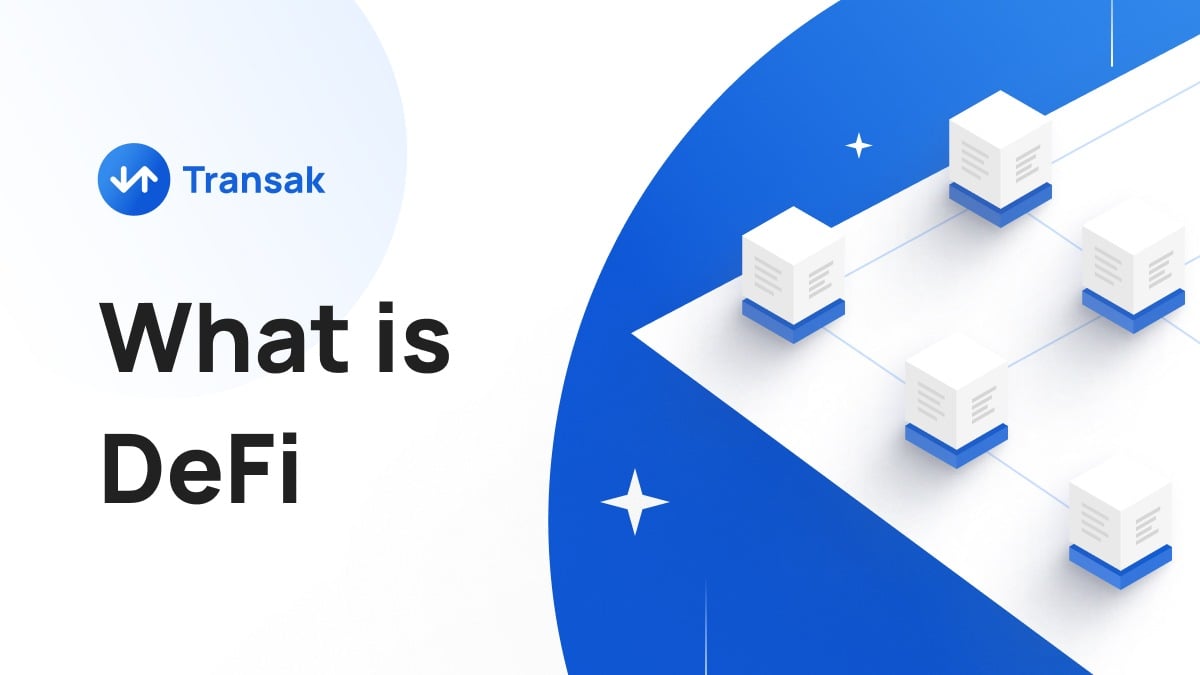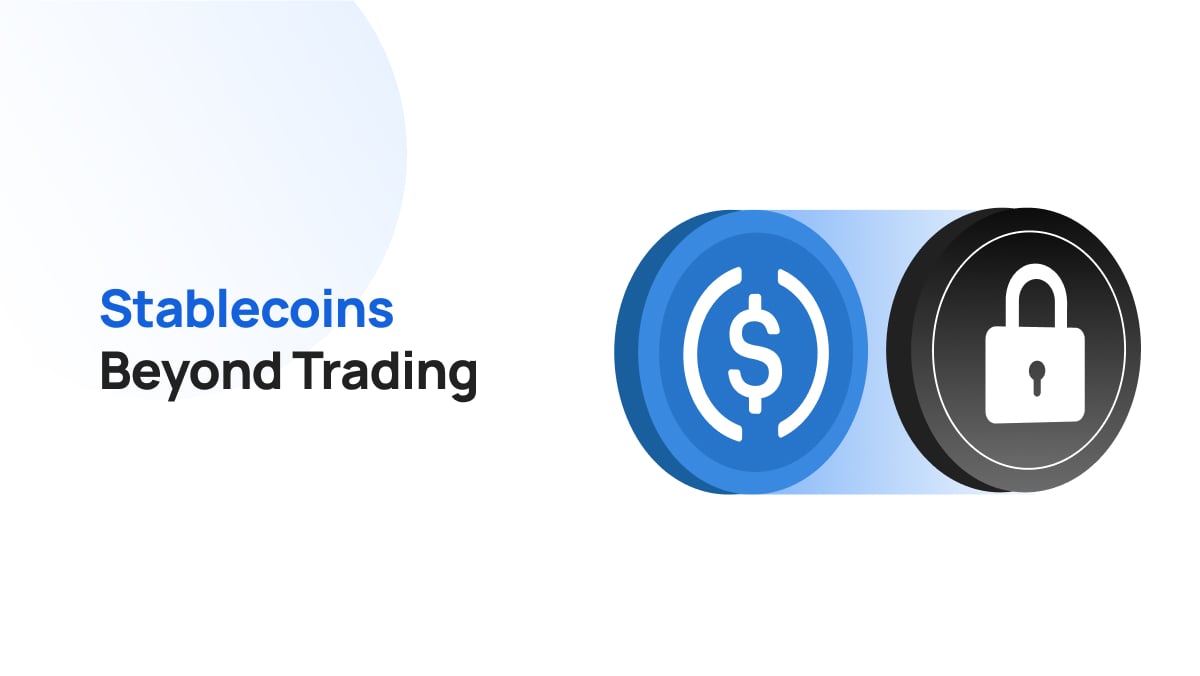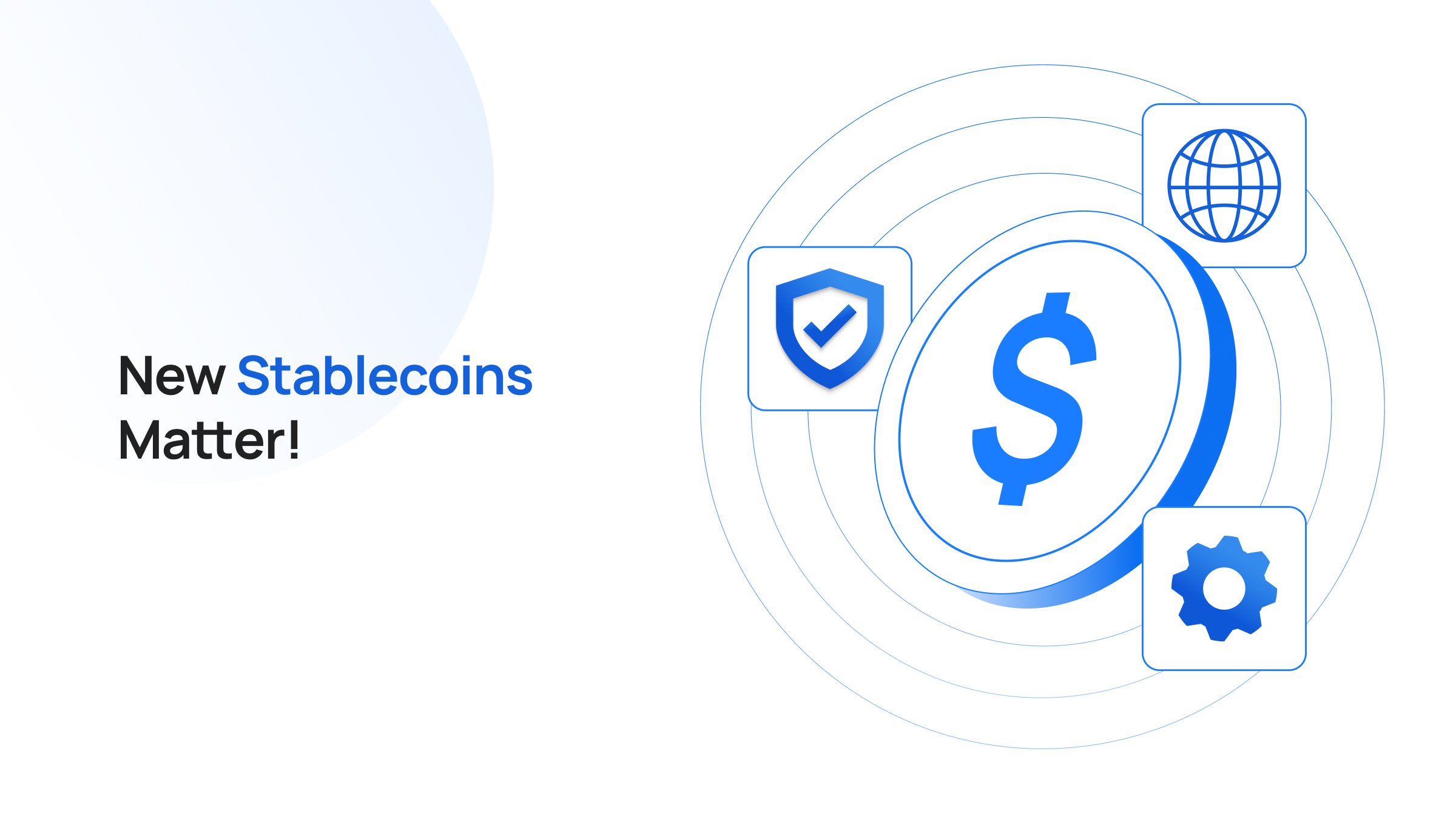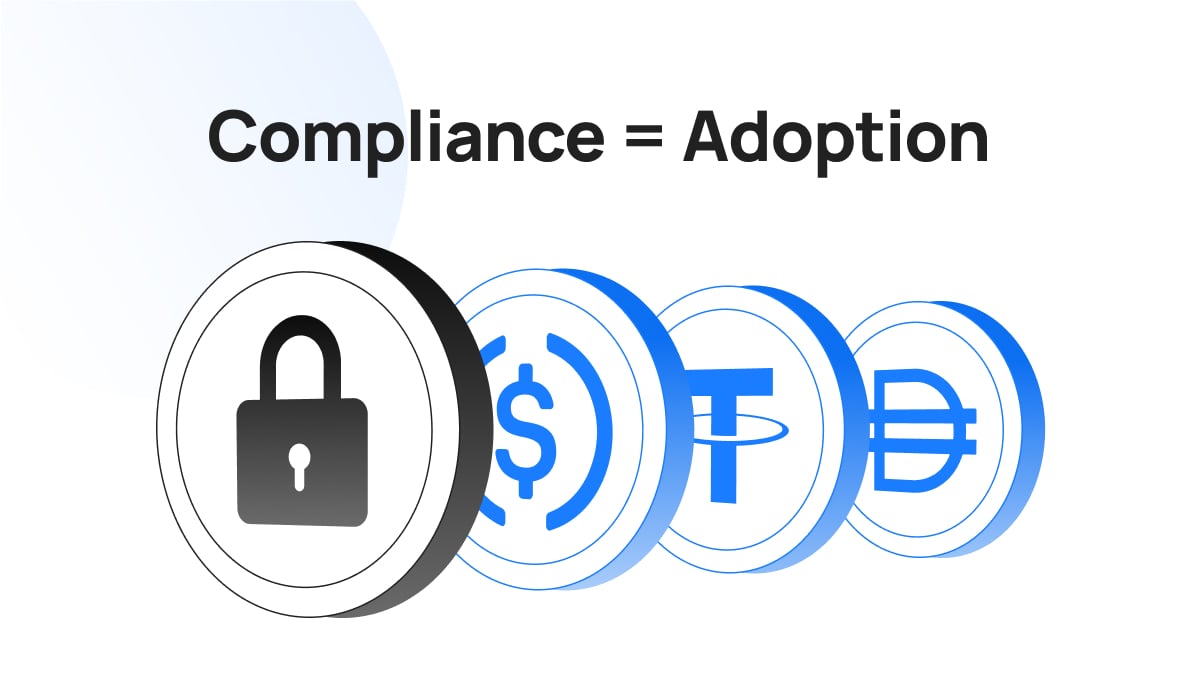“Necessity is the mother of invention.”
The cracks in the traditional financial system necessitated a peer-to-peer, intermediary-less financial layer for the world.
Our current financial system, built on a network of centralized institutions like banks and brokers, has served as the backbone of global commerce for centuries. However, downfalls in this foundation have become increasingly apparent.
For many, access to essential financial services remains limited by geographical barriers, bureaucratic hurdles, and high fees. Even for those within the system, concerns linger about transparency, control, and the potential for manipulation by gatekeepers.
This gave birth to decentralized finance (DeFi) – a revolutionary system built on blockchain technology that promises to reshape the way we interact with money. DeFi bypasses traditional intermediaries, offering a suite of financial products and services directly between users, all powered by the transparency and security of blockchains.
In this article, we dejargonize decentralized finance and provide you with a roadmap on how to get started safely as a beginner.
What is DeFi?
DeFi is not an app or a company — it is a concept.
The premise of DeFi is, as the name suggests, decentralization. It seeks to take the power from profit-driven financial institutions and put it back in the hands of regular people performing regular transactions. All of that is powered by the underlying technology, blockchain.
Why Traditional Finance Doesn’t Work
One of the primary issues with traditional finance is its centralization.
Major financial institutions hold considerable power over the economy and individual access to financial services. This centralization can lead to inefficiencies, such as slow transaction processing times and higher costs for services due to the layers of intermediaries involved.
Further, these institutions can become so large and interconnected that they are deemed "too big to fail," leading to scenarios where their potential failure could pose systemic risks to the entire economy. The 2008 financial crisis is a poignant example of this, where the collapse of several major financial institutions required government interventions worldwide to prevent a total economic meltdown.
Traditional finance often lacks transparency.
The complexities of financial products and the inner workings of financial institutions can be opaque, making it difficult for consumers to make informed decisions.
This opacity can also contribute to unethical behaviors and practices, as seen in various financial scandals over the years, where a lack of clear, accessible information allowed for manipulation and fraud at large scales.
Accessibility is another critical issue.
A significant portion of the global population remains unbanked or underbanked, particularly in developing countries, where access to basic financial services is limited or non-existent.
Even in developed markets, the ability to access comprehensive financial services can be heavily influenced by an individual's economic background or social status, perpetuating cycles of inequality.
Enter Decentralized Finance
Unlike TradFi, DeFi operates without the need for intermediaries such as banks. Instead, transactions are managed through smart contracts on the blockchain.
Smart contracts automatically execute transactions and agreements as soon as set conditions are met, reducing the time and cost associated with manual processing and middlemen.
DeFi also enhances transparency and accessibility. All transactions on a blockchain are recorded on a public ledger, visible to anyone, which helps diminish the opacity associated with traditional finance.
Moreover, because DeFi platforms operate on technology accessible to anyone with an internet connection, they can potentially offer financial services to the global unbanked population, thus democratizing access to financial tools and resources.
Three Pillars of DeFi
Blockchain: The Bedrock of Trust and Decentralization
Blockchain's role in DeFi goes far beyond simple peer-to-peer transactions. As a distributed, tamper-proof ledger, it provides an unalterable record of all activities within the DeFi ecosystem.
Blockchain’s immutability creates an inherently transparent and auditable environment, which is essential for building trust within a system that doesn't rely on traditional intermediaries.
By removing gatekeepers, blockchains enable anyone with an internet connection to participate in financial activities. This fosters accessibility and inclusivity, offering opportunities traditionally reserved for those with access to privileged financial institutions.
Blockchain isn't simply a database; it's a programmable platform upon which more complex financial instruments and structures can be built. This opens the door to innovation on a scale never seen before in traditional finance.
Smart Contracts: The Engines of Automation and Efficiency
Smart contracts are self-executing programs that reside on the blockchain. Their strength lies in automating the terms of an agreement: If X happens, then do Y automatically. This reduces friction, counterparty risk, and the need for manual intervention. They become the enforcers of financial agreements.
Where DeFi truly shines is in its ability to model complex financial relationships. Consider lending platforms — smart contracts can codify interest rates, collateralization requirements, liquidation processes, and more. This allows for the creation of decentralized financial systems offering borrowing and lending services akin to traditional banks, but with greater efficiency and transparency.
Think of smart contracts as programmable Lego bricks. By combining and layering them in different ways, developers can create entirely new DeFi products and services with unique functionality.
Cryptocurrencies: The Fuel for a New Financial System
Unlike fiat currencies bound to a central authority, cryptocurrencies are designed to live and function within the decentralized world of DeFi. They offer a borderless, censorship-resistant form of money that's natively programmable and compatible with blockchain-based systems.
Cryptocurrencies serve as the lifeblood of DeFi, providing liquidity for trading on decentralized exchanges, acting as collateral for loans, and enabling a host of other financial activities within the ecosystem.
Cryptocurrencies often carry more utility than simple units of exchange. They can be used to reward users for providing liquidity (yield farming), influence the direction of DeFi protocols through decentralized governance models, and incentivize network security.
Road Map To Get Started With DeFi
1. Choose a Crypto Wallet
For beginners, a simple, multi-chain software wallet is easiest. Good options include Trust Wallet and Zengo. These are free, work on multiple devices, and let you explore different blockchains.
Important: Write down your seed phrase and store it in a VERY safe place. This is like your master password – anyone who has it completely controls your wallet.
Hardware wallets, like Ledger, offer enhanced security. If you start holding significant amounts of crypto, consider investing in one.
Learn here how to set up a crypto wallet.
2. Choose a Blockchain
As a beginner, look for a chain with low transaction fees and lots of apps to try out. Solana is a good choice – it has a vast ecosystem of decentralized applications (dApps), which provides a practical environment to learn about key concepts such as public/private keys, seed phrases, blockchain explorers, and bridges.
You can also explore Ethereum L2s (e.g., Polygon and Linea) and Bitcoin L2s (e.g., Lightning Network).
3. Acquire the Native Token
You'll need some of the blockchain's native token to pay for transactions (like gas fees on Ethereum). For Solana, the native token is SOL.
You can purchase SOL directly through services like Transak. Here's the process (example with Trust Wallet):
- Open Trust Wallet and tap on "Buy"
- Select SOL (or another crypto you want)
- Choose Transak as your provider, enter the amount, and follow the steps to pay with your debit/credit card or bank account.
4. Choose a dApp
Now the fun begins! With a funded wallet, you're ready to explore. Here are some easy options to start with on Solana:
- Raydium: A decentralized exchange (DEX) where you can swap tokens.
- Orca: Another popular DEX with a friendly interface.
- Phantom: A Solana-specific wallet that also lets you interact with dApps (useful if you didn't choose Trust Wallet or ZenGo)
Some wallets, like Ledger, allow you to stake SOL from directly within their app.
10 Benefits of Decentralized Finance
Decentralized Finance (DeFi) has several benefits that differentiate it from traditional finance (TradFi). These benefits revolve around greater accessibility, transparency, and flexibility.
1. Accessibility and Inclusivity
DeFi platforms operate on blockchain technology, typically accessible to anyone with an internet connection. This reduces barriers to entry for individuals in regions without robust banking infrastructure or those excluded from traditional financial services.
2. Transparency
Since DeFi is built on blockchain, all transactions are recorded on a public ledger, making them transparent and auditable by anyone. This can increase trust among users as they can verify transactions independently.
3. Interoperability
Many DeFi applications are built on compatible blockchain networks, allowing for seamless interactions between different services and protocols. Users can move their assets across different platforms without needing intermediaries.
4. Innovation and Flexibility
The open-source nature of many DeFi projects encourages ongoing innovation. Developers can build on existing protocols, introduce new services, and improve the system, fostering a fast-evolving financial environment.
5. Censorship Resistance
DeFi platforms operate in a decentralized manner, reducing the influence of any single authority that can block transactions or freeze accounts. This can be particularly appealing in regions with restrictive financial regulations.
6. Reduced Costs
DeFi eliminates intermediaries like banks and brokers. This often translates to lower fees for services like lending, borrowing, and trading.
Transactions can be much faster compared to traditional financial systems, which often rely on multiple intermediaries and slow processes. This is particularly true in the case of cross-border transactions which can take days in the conventional way.
7. Programmability
Smart contracts automate executions and enforce contracts in DeFi applications. This programmability can streamline complex processes, reduce the need for manual intervention, and minimize human errors.
8. Customization and Control
Users have more control over their financial activities in DeFi. They can directly interact with the financial services through user interfaces and customize their investment strategies or use specific financial services without needing approval from a central authority.
9. Earning Opportunities
DeFi offers various ways to earn returns on assets through mechanisms like yield farming, liquidity mining, and staking. These opportunities often present higher yields compared to traditional banking products.
10. Composability
Think of DeFi protocols as "money legos". They can be combined in creative ways to build entirely new financial services, unlocking new possibilities.
What Is The Future of Decentralized Finance?
One major focus for the future of DeFi is the development of standards and interoperability. Currently, different blockchains operate like islands, limiting cross-chain communication and hindering the flow of value. Standards for things like tokenization and smart contracts would facilitate seamless interactions between DeFi protocols on different blockchains.
Another transformative area is the tokenization of real-world assets (RWA). Bringing assets like real estate, commodities, or bonds onto the blockchain could unlock massive liquidity and open up new investment avenues within DeFi. This merges the efficiency and transparency of DeFi with the established value of traditional asset classes.
DeFi gaming is on the cusp of explosive growth. Blockchain technology enables true ownership of in-game assets, verifiable scarcity, and the creation of sustainable economies within gaming ecosystems. This has the potential to blur the lines between entertainment and finance, empowering players to earn while they enjoy.
Right now, we're seeing siloed blockchain ecosystems and fragmented liquidity. This means assets are often locked within their respective chains, limiting the potential for cross-chain usage and creating inefficiencies. Promising solutions like the xERC-20 standard aim to bridge the gap, allowing assets represented on one chain to be seamlessly used on another.
Addressing interoperability, embracing real-world assets, tapping into the potential of gaming, and finding ways to unify blockchain ecosystems will be stepping stones for DeFi’s success. As these solutions mature, we can envision a financial landscape that's more inclusive, efficient, and creative than ever before.
Want to be a part of DeFi’s future? Start your journey with Transak.






